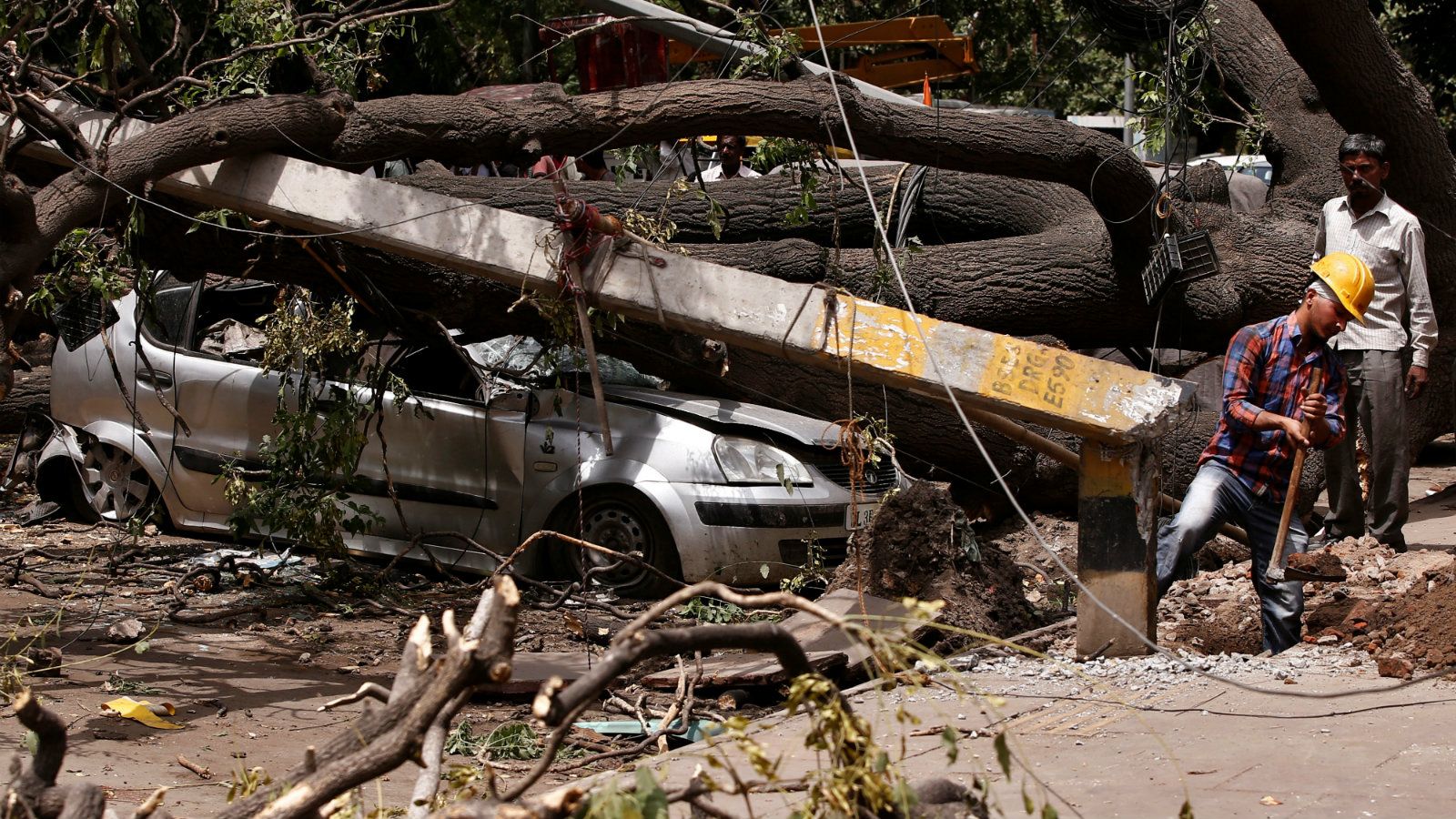On May 29, up to 40 people were reportedly killed as thunderstorms and heavy winds struck parts of Uttar Pradesh (UP), Bihar, and Jharkhand, causing trees to fall and houses to collapse. This takes the total death toll from extreme weather events to over 200 this month, with UP being the worst-hit.
On May 13, inclement weather claimed the lives of at least 70 in UP, West Bengal, Andhra Pradesh, and New Delhi. At the start of the month, Rajasthan and UP faced freak dust storms and thunderstorms that killed over 100.
Meteorologists have largely attributed the spate of bad weather to a western disturbance (a low-pressure system) and cyclonic circulations over the Indian subcontinent. However, rising temperatures, too, have intensified the storms. Many Indian states have experienced heatwave conditions for weeks, with temperatures reaching up to 46.7 degrees Celsius.
But why has the death toll been so high? Diego Rybski, a researcher at the Potsdam Institute for Climate Impact Research, argues India’s socio-economic conditions and disaster management systems are partly to blame.
“One aspect with respect to extreme weather casualties is the prevalence of slums in India, which are constructed in a haphazard and makeshift manner. The poor quality of housing makes the buildings more vulnerable to extreme weather events,” Rybski told Quartz in an email. Along with better early warning systems, solid housing and infrastructure are the need of the hour as the effects of climate change become more pronounced in India.
While India has made headway in its efforts to tackle climate change by promoting electric vehicles and switching over to renewable sources of energy, climate-proof urban planning is hardly part of the conversation. So hundreds of thousands of Indians are left vulnerable.
Many Indian states have prepared climate action plans, but a recent study (pdf) by the New Delhi-based Centre for Science and Environment found that a lack of coordination and knowledgeable officials, as well as limited resources, mean that implementation remains a problem. And in almost all the state plans, climate-proof infrastructure development doesn’t feature high.
As India prepares for its annual monsoon, which routinely causes damaging and deadly floods, the coastal state of Karnataka has already been hit by heavy rains brought by Cyclone Mekunu. Low-lying areas in the state’s Mangaluru district are flooded after the area received a record amount of rainfall, the most since 1982.
The need for all-weather development has never been more apparent, Added Content on, Quartz India.

























Add Comment